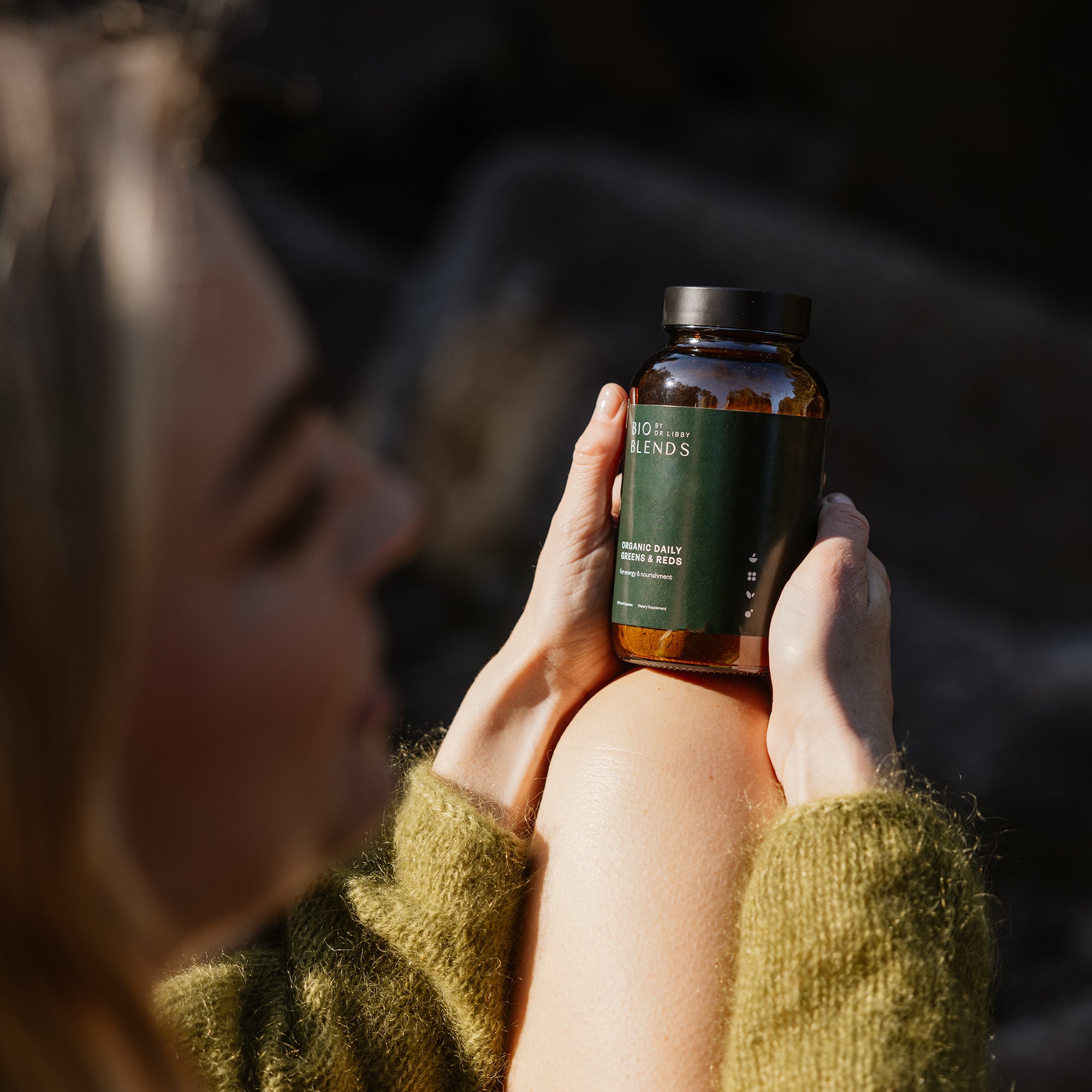Article: 9 things you need to know about iron

9 things you need to know about iron
Often when we feel lousy, we assume the solution must be complex. Yet many answers are remarkably simple – and restoring iron levels is one of them. Iron is fundamental to an endless array of processes inside you, and time and again, I’ve seen that addressing a deficiency can lead to profound, sometimes life-changing improvements.
Iron deficiency is the most common nutritional deficiency in the world. You don’t need to have iron deficiency anaemia – the most extreme form – to benefit from repletion. Even mild depletion can impact how you feel, function and look. Symptoms include persistent fatigue, slower metabolism, anxiety, poor sleep, heart palpitations, brain fog, cold hands and feet, heavy periods, hair loss, joint pain and low mood.
It’s also increasingly common in children and adolescents – with wide-ranging effects on development, behaviour and wellbeing. Symptoms in children include fatigue, irritability, pale skin, low appetite, picky eating, frequent infections, difficulty concentrating and delayed growth. In school-aged children, low iron can affect learning and memory, while in teenagers – especially menstruating girls – it can reduce energy, mood and physical performance.
Some people become so used to their symptoms they accept them as normal. Others chalk it up to perimenopause, ageing, stress or modern life, forgetting how good they could feel – or having never experienced it at all. Too often, iron deficiency remains undiagnosed, unaddressed or poorly treated, leading to prolonged and unnecessary suffering.
Let’s take a look at nine things everyone needs to know about iron – and why correcting a deficiency can quite literally change your life.
1. Iron needs aren’t one-size-fits-all
They vary significantly depending on factors such as age, biological sex, whether you menstruate, are pregnant or breastfeeding, your level of physical activity and even your dietary choices. For example, women aged 18–50 (and even some teenage girls) typically require 18 mg of iron per day due to menstruation, while men of the same age and postmenopausal women need just 8 mg. During pregnancy, iron needs rise sharply to 27 mg per day to support increased blood volume and fetal development. Infants aged 7-12 months require 11 mg, highlighting how essential it is to ensure iron-rich foods are introduced when starting solids.
Those who eat in a vegetarian or vegan way require 1.8 times the RDI for iron than omnivores, as the non-haem iron in plant foods is less readily absorbed, plus these foods contain more iron absorption inhibitors. Endurance athletes and those with intense training schedules have higher needs too – potentially up to 70% more than their RDI – for myriad reasons. Because it can be difficult to obtain enough iron from food alone when your RDI is on the higher end, supplementation is often necessary to ensure you don’t end up deficient.
2. Your thyroid and metabolism are impacted by your iron levels
Iron is essential for the production of thyroid hormones. Plus it's needed to convert inactive thyroid hormone – T4 (thyroxine) – into active thyroid hormone, T3 (triiodothyronine). These hormones regulate your metabolic rate – how your body converts food into energy and every cell needs them for their function. Without adequate iron, your thyroid can’t do its job efficiently, which can lead to a sluggish metabolism, fatigue, low mood, body fat gains, cold sensitivity and brain fog. In fact, low ferritin (stored iron) and higher transferrin (iron hunger) is commonly seen in people with underactive thyroid symptoms, even if their thyroid hormone levels are technically ‘normal’. Poor iron status and an underperforming thyroid so often go hand-in-hand and when this is the case, improving iron levels, improves thyroid function.
3. Iron deficiency can be driving mental health challenges
A 2023 study titled Psychiatric Manifestations of Iron Deficiency Anaemia highlighted something I’ve seen time and again in clinical practice – that iron deficiency doesn’t just affect physical energy; it can profoundly impact mental health too. The researchers found that low iron levels are linked to anxiety, low mood, restlessness, palpitations and even symptoms often mistaken for depression. They also noted that correcting iron levels improved mood, reduced or resolved anxiety and even alleviated symptoms like anhedonia (the inability to feel joy or pleasure). It’s a powerful reminder that sometimes the answers to our biggest health challenges are far simpler than we think – and iron is often the missing piece.
4. Your liver needs iron to detoxify efficiently
Iron plays a key role in the liver’s detoxification processes, particularly in Phase I detoxification, where enzymes help prepare potentially problematic substances for elimination. Many of these enzymes belong to a family called cytochrome P450, which are iron-dependent. Without enough iron, these enzymes can't function properly, and your liver’s ability to process toxins, hormones and medications may become compromised.
5. Inadequate iron can be driving a challenging perimenopause
Iron deficiency is incredibly common during the perimenopausal years, yet it’s rarely part of the conversation. For some, it’s a long-standing depletion that began in adolescence. For others, it’s more recent – triggered by heavier or more frequent periods. And because many of the symptoms overlap with those typically attributed to perimenopause – fatigue, brain fog, low mood, anxiety, poor sleep – iron deficiency is often tolerated rather than treated.
But here’s the truth: iron plays a critical role in some of the body’s most essential processes that all profoundly influence how you feel on a day to day basis. So if your iron levels are low during this already dynamic time, your resilience takes a hit. Symptoms worsen. And the whole experience of perimenopause can feel far more difficult than it needs to be. I can’t encourage you enough to know your iron status and correct any degree of insufficiency or deficiency you find.
6. The form of iron matters
There are two main types of iron found in food: Haem iron – found in animal foods like red meat, offal and seafood, like mussels and sardines. This form is more easily absorbed than the other main food-sourced iron called non-haem iron, which is found in plant foods such as seaweed, lentils, leafy greens, tofu and parsley. This form requires vitamin C to foster its absorption, plus its uptake can be influenced by other nutrients (more on this below).
When it comes to supplementation, the form matters, too. Most conventional iron supplements contain synthetic (lab-made) iron and often cause side effects like constipation, nausea or gut discomfort. A ground-breaking and superior form of iron found in high quality supplements is ferritin-iron sourced from organic peas. Naturally encased in a protein shell, this form is absorbed via a unique pathway, overcoming the usual iron absorption hurdles, plus there’s no constipation. As far as iron supplements go, look for one made from “ferritin-iron from organic peas.”
7. Inflammation can interfere with healthy iron status
Iron absorption and utilisation is impacted by inflammation and it can also skew the way iron parameters show up in blood tests – it falsely raises the marker of iron storage. Inflammation can be caused by lifestyle choices such as too many poor-quality “food” and drink choices (such as too much junk and alcohol) and HPA (hypothalamic-pituitary-adrenal) axis dysfunction (low cortisol, or inadequate cortisol to meet demands), which occurs in and presents as “burnout”, a state too many people experience today. “Burnout” can occur at any age or stage of life and in my clinical experience, too many women head into perimenopause having been in “burnout” for many years. Inflammation can also be caused by injuries and infections. Inflammation raises hepcidin, a protein made by the liver that determines how much iron you can absorb. When hepcidin is high, absorption is blocked.
8. Some nutrients are required for iron do its job and others impact its absorption
Iron doesn’t work alone in the body – it relies on the presence (or absence) of other nutrients to be utilised effectively. Vitamin C enhances the absorption of non-haem iron (from plant-based foods) by converting it into an absorbable form, which is why a decent squeeze of lemon juice on greens or pairing capsicum with legumes can make a real difference. Copper is essential for many critical aspects of healthy iron metabolism. Food sources include shellfish, nuts, seeds, organ meats, avocado and dark chocolate. Vitamin A (the body can convert beta-carotene into vitamin A) helps mobilise stored iron and improve its utilisation, while B vitamins, widely spread throughout whole foods, play a vital role in red blood cell formation and oxygen transport, working alongside iron for healthy blood function.
On the other hand, calcium competes with iron for absorption, especially when consumed in large amounts – such as dairy eaten alongside an iron supplement or high-dose calcium tablets. It’s best to separate calcium and iron intake by at least two hours. Tannins in tea and coffee, as well as phytates found in wholegrains and legumes, can also inhibit iron absorption, which is one reason plant-based sources of iron tend to be less bioavailable.
9. You may still be suffering from low iron even if you’re told your levels are ‘normal’
Many people are told their iron levels are ‘normal’ based on standard blood tests, yet they still experience classic symptoms of low iron. Why? Because what’s considered ‘normal’ on a pathology report doesn’t always reflect optimal iron status for your unique body. For example, your ferritin (a marker of stored iron) might fall within the lab’s reference range, but still be too low to support your energy, mood, metabolism or hormonal health – particularly if you’re menstruating, highly active, or recovering from illness. Some labs set the lower end of the ferritin range as low as 15–20 µg/L, yet clinically I’ve found most people feel best with levels above 50 µg/L. I suggest aiming for 80-100 µg/L for robust health – think of it as having a back up battery.
It’s also important to assess iron in context – looking not just at ferritin, but also serum iron, transferrin, and transferrin saturation. These give a fuller picture of how well your body is accessing and utilising iron, not just storing it. Think of transferrin as a taxi that drives iron around. Your body makes more taxis (transferrin) when it wants more passengers (iron). Elevated transferrin, or high end normal transferrin therefore, is a sign that your body is seeking more iron. So if your iron studies are ‘normal’ on paper but you still feel far from your best, it’s worth digging deeper. You know your body best – don’t be afraid to advocate for further investigation or seek a second opinion.


